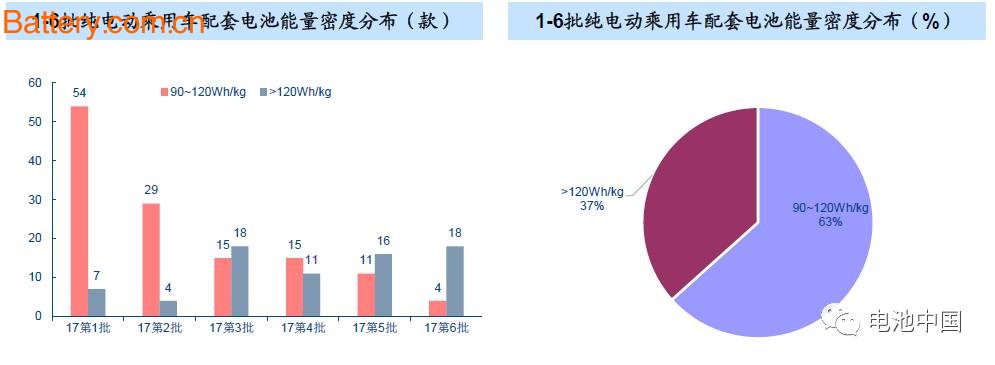So, by 2020, can this “small target†of energy density be realized? We may be able to get a glimpse of the matching situation of the first six batches of new energy recommended models. For example, in the field of pure electric passenger vehicles based on ternary batteries, the system energy density can reach 1.1W subsidies by reaching 120WH/Kg. Battery China Network statistics found that only the first batch of 7 cars can get 1.1 times subsidy, the second batch is 4, the third batch is 18, the fourth batch is 11 and the fifth batch is 16 The batch is 18 models. Although there are more ups and downs in quantity, the trend of high energy density is steadily increasing from the perspective of proportion, which is 11%, 12%, 55%, 42%, 59% and 82% respectively. In addition, it is worth noting that the system energy density of some models has exceeded 150WH/Kg. Wan Gang, the Minister of Science and Technology of the People's Republic of China, once said, "Since the large-scale development of electric vehicles in 2010, the energy density of electric vehicle batteries has doubled every four years or so, and the cost has dropped by about 50%." As of the end of 2020, there are less than three and a half years, so it seems that although the system energy density is more difficult to improve, it is expected to achieve a system energy density of 260WH/Kg. According to Tesla 's public data, the energy density of its existing 18650 battery system has reached 250WH/Kg, and the current energy density of the 21700 battery system can be increased by about 20% to about 300WH/Kg. This undoubtedly provides a good benchmarking parameter for domestic power battery companies. The new energy automobile industry has a long way to go to bend the road, so how can domestic enterprises improve the energy density of the power battery system? Battery China Network believes that the increase of system energy density is a comprehensive project, which requires the joint efforts of materials companies, battery companies and vehicle companies: From a chemical point of view, it can be roughly summarized as the following aspects. The technical route can choose a ternary battery route. The positive electrode material is made of high-nickel ternary or lithium-rich manganese-based material, and the negative electrode material is made of silicon-based material. The electrolyte and the separator can be coated with a ceramic coating. Chen Yanbin, deputy general manager of Dangsheng Technology, once said that the company's product development strategy is mainly to use high-nickel ternary materials, because "high nickel is the preferred direction relative to high voltage", and the ultimate goal of high-nickel materials is 811; after 2020, it needs to be upgraded through new materials and battery systems, such as lithium-sulfur batteries and lithium-air batteries. From a physical point of view, lightweight design and battery simplification, such as reduced component weight and process optimization, are two important and very effective ways. Moreover, the latter is not only suitable for cylindrical batteries, but for soft and square batteries, changing the size can also increase the system energy density of the battery to some extent. In the current imperfect charging facilities and consumers' endurance anxiety, the market needs electric vehicles that truly meet the needs of consumers. Power battery companies should think from the overall perspective of new energy vehicles, closely cooperate with the upstream and downstream of the industry chain, and improve the system energy density of power batteries in various ways. As Wang Dong, director of the National 863 Electric Vehicle Major Power Battery Test Center, said, the battery energy density is not simply the energy density of the battery level, but the battery level, the energy density of the system, and the relevant standards have been raised. System level. PVC film Label Materials is characterised by excellent outdoor durability. Normally is used for daily chemical product, cosmetics, electrical products, especially suitable for information labels of high-tech products; and some high-end labels such as jewelry, jewelry, clocks and watches, electronics, metal industry, etc. PVC printing film,Calendered PVC film,PVC adhesive label,PVC labelstock,PVC film label Jiangsu Aoli AD Material Co.,Ltd , https://www.aolimaterials.com
According to the previously published road map of power battery energy density, by 2020, the energy density of the power battery cell should be greater than 300WH/Kg, and the system energy density should reach 260WH/Kg. From the two different expressions "to be greater than" and "to achieve", we can also feel that the realization of system energy density is more difficult than the former.